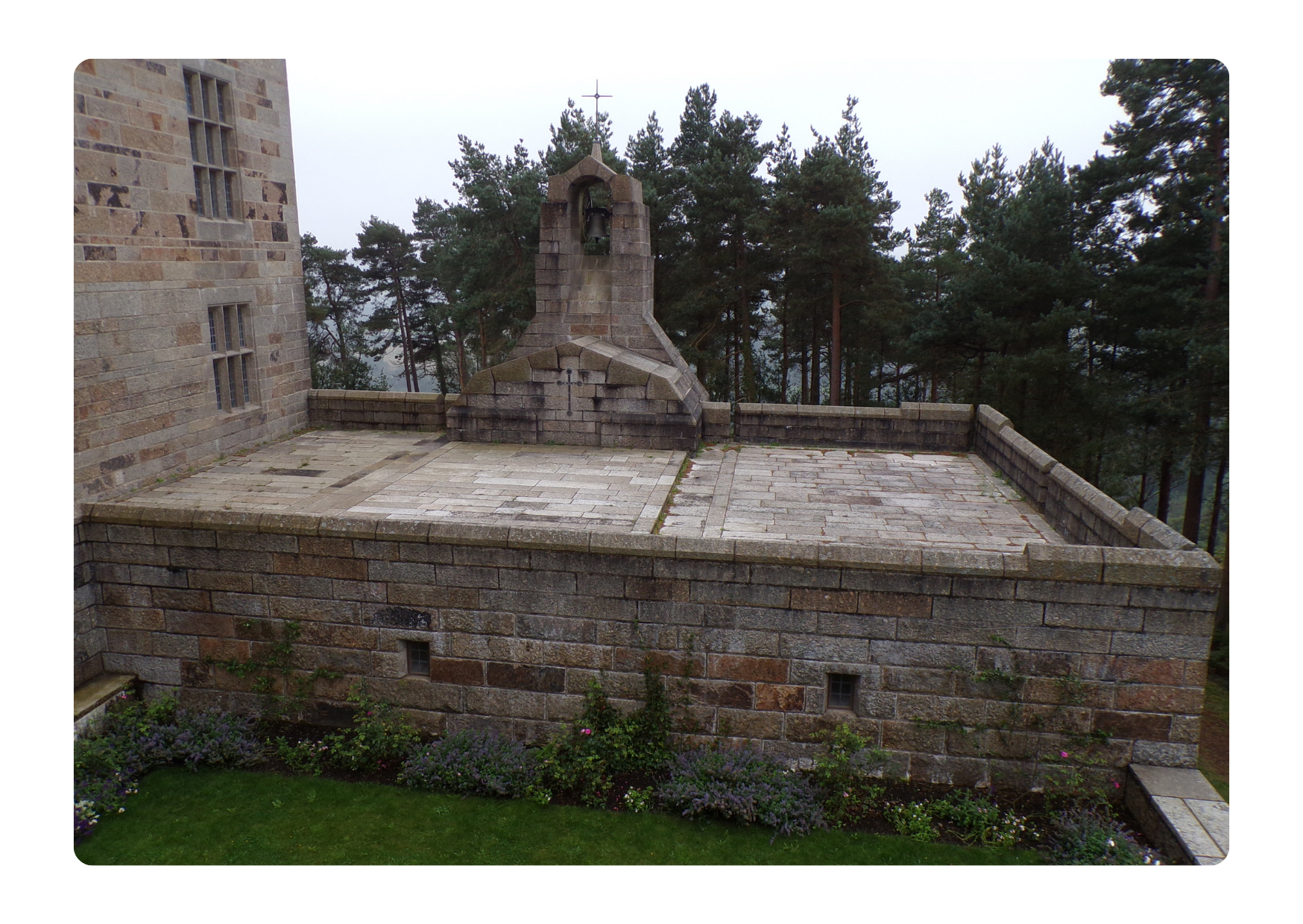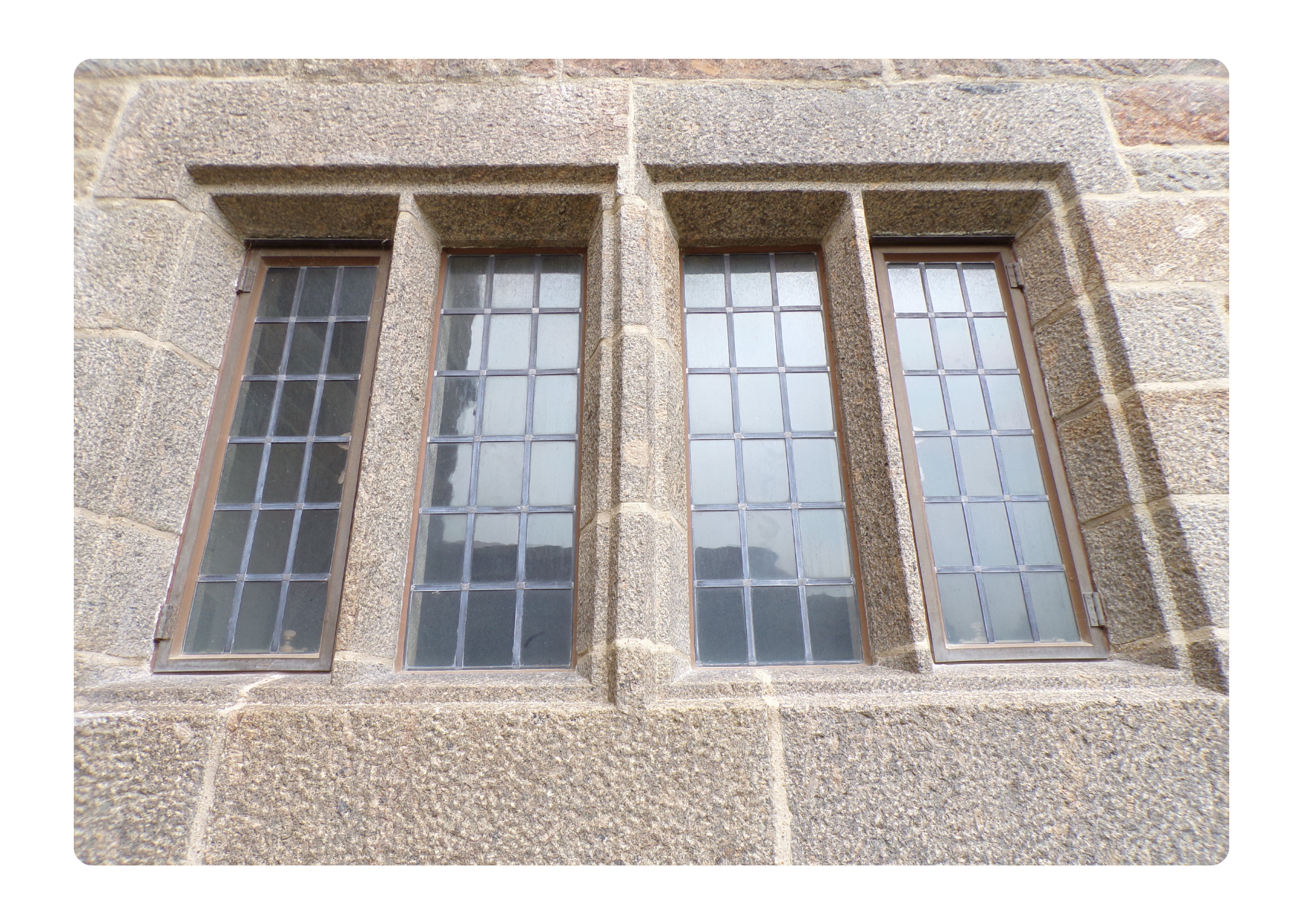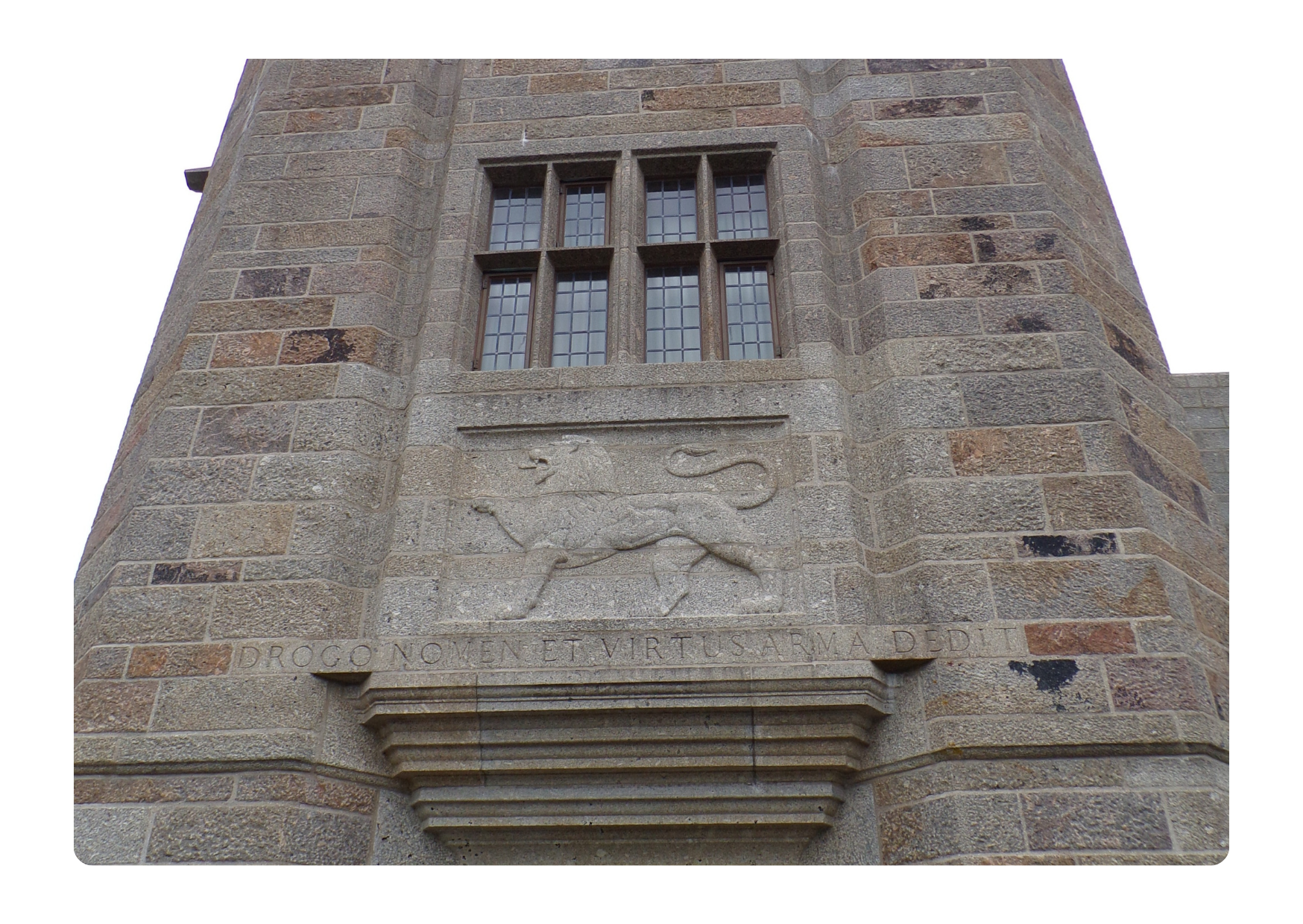Our business development manager, Rebecca, visited Castle Drogo, a National Trust property on the north edge of Dartmoor in Devon. The property has undergone 8 years of restoration work to combat longstanding water penetration and damp issues.
The castle, the last to be built in England, was designed by Edwin Lutyens for the Drewe family. Construction commenced in 1911 and was not completed until the 1930’s.
The imposing design has walls constructed of granite blocks with a flat roof covered by granite paving. The large windows on the ground floors reduce in size on the upper floors to increase the appearance of height. All granite used in the construction was quarried within 30 miles of the property.
The castle’s construction incorporated new materials and technologies at the time, such as asphalt to cover the flat roof and installation of a hydro-electric turbine to generate electricity from the River Teign to power the 332 electrical plug sockets installed throughout the property.
Issues with the design
Asphalt was used to cover the flat roof beneath the granite paving which did not allow for insulation, ventilation and thermal movement, and the asphalt was prone to cracks as the temperature rose and fell so that even before building was completed it had started to leak.
The original design included vertical tanking through the walls to protect the inner leaf of the solid core walls. To work, the tanking had to be continuous from the horizontal membranes that covered the roofs. The cracks and leaks in the roof of the building affected the integrity of the tanking system and it probably leaked soon after it was finished. An early repair introduced lead flashings which altered the appearance of the plain stone walls.
Where water penetrated the walls, it caused substantial mould growth and lead to lime leaching out of the mortar and discolouring the granite stonework.
Julius Drewe had insisted that the castle design did not have window ledges just like a medieval fortress, but without windowsills to provide protection the windows were a further source of water ingress.
After the National Trust acquired the property, it began to try to address the water penetration. Between 1983 and 1989 new asphalt was laid across the roof, and parapets around the whole of the perimeter were dismantled and rebuilt to enable a lead damp-proof course to be introduced. Sadly, these works did not solve the issues and it was only a few years before signs that the repairs had failed began to reappear.
The National Trust decided that the only way to fully resolve the problem was to carry out holding repairs and carry out a comprehensive investigation. The conclusion was that there were three major defects in the original design that needed to be remedied.
The flat roof
The flat roof covering of asphalt and granite slabs could not cope with the huge temperature variations and the surface was prone to cracking allowing water penetration.
The smaller roof above the chapel was used as a test area and work only begun on the main roof when it was determined that the remedial works had been successful.
A replacement high-tech roof system designed by a German company called Bauder was chosen to replace the asphalt. The system has a two-layer membrane designed to cope with extremes of temperature that the building faces.
The original roof was covered in 2,355 granite blocks over a huge area, equivalent in size to 2 football pitches. The granite blocks needed to be removed and reinstated once the new system was installed and roof gullies were redesigned to cope with the heavy Dartmoor rainfall. Reinstatement of the granite paving not only prevented wind lifting the insulation but it also reintroduced a key element of Lutyens’s design.
Repointing
Water penetrating the flat roof was seeping through the walls, dissolving the mortar and causing lime staining on the face of the walls. To determine the most appropriate renovation, the existing mortars and possible replacements were monitored in a series of trials. The stonework was cleaned, and the trial mortars were matched to the colour and texture of the original.
The cement pointing of the area of wall that was being monitored was raked out and re-pointed with two different hydraulic lime binders of varying mixes, totalling four different combinations. Electronic probes were inserted into the pointing to form a grid of sensors wired to a data logger, from which information was downloaded every six weeks. The data logger was also linked to a weather station that simultaneously recorded the specific weather conditions.
After 18 months the results indicated that the replacement hydraulic lime mortars had reduced the moisture levels within the wall and halted further lime staining. The defective mortar could be raked out and replaced. The total area of repointing stretches to 60,000 metres or 42 miles!
The new damp-proof courses also allowed the removal of the lead flashings, by then already corroding and failing, and this dramatically improved the Castle’s appearance, returning it to Lutyens’s design of uninterrupted planes of granite.
The windows
The windows were susceptible to water penetration around the frames. It was decided that new mastics would require less maintenance and reduce water penetration. The replacement mastics needed to be inserted to secure the joint between the granite aperture and the bronze frame and required the removal, refurbishment and resealing all 913 windows.
Hydro Electric Turbine
The National Trust set an objective to produce 50% of its energy from renewable sources by 2020, so throughout 2017 work was undertaken to reinstate the hydro turbine. Most of the original system was found to be sound and reusable. The turbines were restored and the concrete pipe that carries water from the weir to the turbine house was still in good condition. New elements, including an intake screening system, will ensure that fish and eels cannot enter the turbine system. The installation of a new cable provides electric directly to the visitor centre.
The work was completed in October 2017 and ever since it has been generating electricity provided there is sufficient water in the river. The electricity powers the visitor centre and any excess is used to heat one of the boilers in the biomass house.











